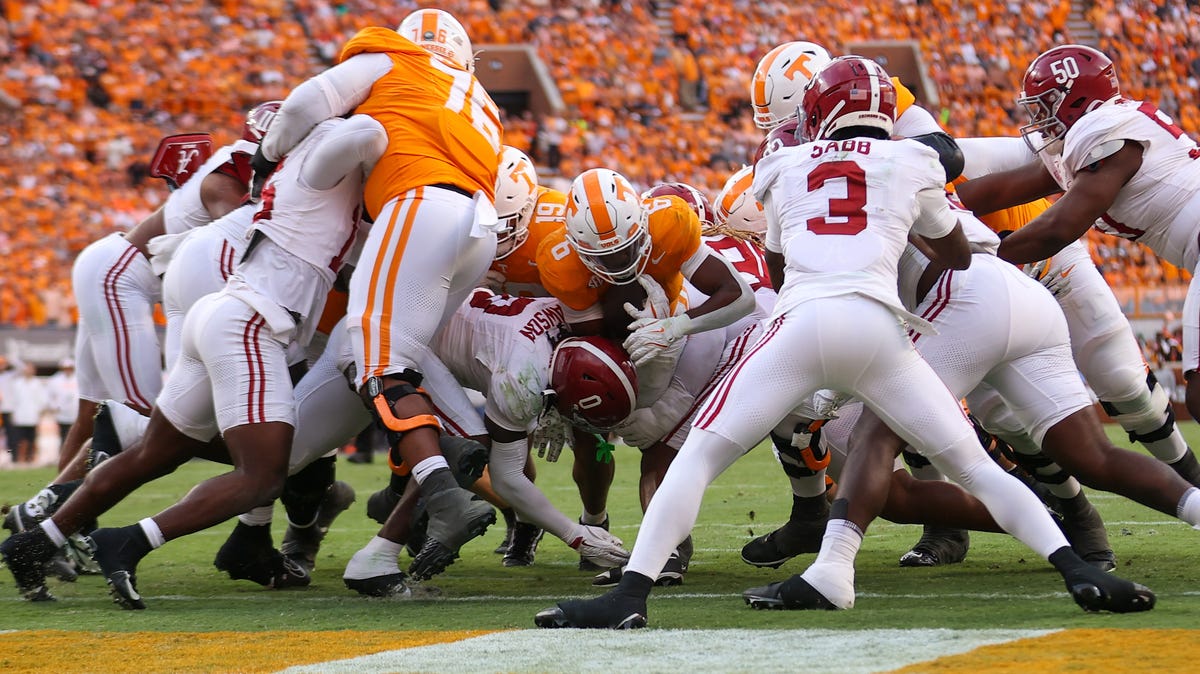Business
Opinion: My business won't flee California like SpaceX or Chevron. But we do want some changes

Businesses both small and large are fleeing California in search of friendlier pastures.
From 2018 through 2021, 352 companies relocated their headquarters from California to other states. The rate of exit more than doubled from 2020 to 2021 and was highest in Los Angeles County, an analysis by the Hoover Institution at Stanford University found.
The wave of departures has continued in 2024: Last month Elon Musk announced he will move SpaceX from Hawthorne to Texas, and this month Chevron announced plans to move its headquarters to the Lone Star State as well.
It’s part of a larger pattern. Headquarters and manufacturing plants are closing down and relocating operations to cities in Texas, Nevada and Florida. The Farmer John Meatpacking plant, a fixture of the Los Angeles meat industry for nearly a century, ceased operations and left the city to continue business elsewhere last year.
While the exodus has been headlined by a few big names, I often hear that medium to small businesses are quitting the city quietly, unburdened by public disclosure requirements and individually too small to register in media reports.
The explanations are varied, but the ultimate reason is clear: Los Angeles is an increasingly difficult place to operate a business. Affordability issues including high taxes and escalating labor, utility and energy costs, in addition to burdensome liability and punitive regulations, top the daily challenges. California perpetually resides at the bottom of state rankings of business favorability.
These factors are compounded by the enticing pull of recruitment efforts by other cities, including the promise of governmental partnership — especially appealing to Golden State businesspeople who complain of treatment as diverse as apathy and outright animosity from local officials.
Tantalized by prospects of greater opportunity, profitability and incentives out of state, the rational business mind makes a compelling case to leave. It practically screams it.
So this may sound crazy: Despite the mounting challenges in Los Angeles, my family-owned business isn’t going anywhere.
We care deeply about cost savings, efficiency and growth opportunities, and we recognize profitability as imperative to survival. But like many other small businesses in Los Angeles, we measure success and derive value beyond just profit and loss.
I am the proud owner of a four-generation beef jerky company that has called Los Angeles home for nearly 100 years. It brings me immeasurable joy to work in the same brick building built by my great-grandfather, greet customers who knew my grandfather, and share an office with my father. You can’t put a price tag on legacy. This legacy of course extends to our employees, many of whom have dedicated more than 25 years to our business, or have gone on to achieve successful careers elsewhere and even start their own businesses.
Rather than chase cheaper labor, our company would rather invest in our employees through health benefits and professional development as well as cultivate a sense of family. Other states have tried to recruit our business to leave California, but among the reasons we have refused is that we don’t want to abandon these connections.
We also value our role as part of L.A.’s communities. This year we launched a program targeting causes that align with our mission — supporting youth, families and active lifestyles — through monetary and product donation, as well as volunteering our time and expertise.
That’s the difference between huge corporations and small businesses. The former each employs thousands of local residents and contributes robust tax revenue to the city at a scale we can’t match. But larger companies — whether publicly traded, backed by private equity or international holding firms, and sometimes led by celebrity billionaires — are moving targets. They will pursue shareholder value at all costs regardless of regional ties or other considerations.
Meanwhile, there are 4.1 million small businesses in California that generate 7.5 million jobs, representing 47% of private-sector jobs. More importantly, two out of three net new jobs come from a small business.
Although corporations are important to L.A.’s financial ecosystem and should continue to be recruited, small businesses should not be discounted. Just because my business and others have chosen to stay here doesn’t mean we should be taken for granted.
In good news, the U.S. Chamber of Commerce reported a 7.8% increase in new business applications in California from 2022 to 2023. Los Angeles County may lead the state in departures, but it also had the most business applications during that year — 160,925. The challenge is getting them to stay.
To that end, we are rallying our peers around a common goal of improving the business landscape. These efforts have coalesced in the Made in LA Coalition working to raise consumer awareness about products manufactured in Los Angeles.
Some of the key initiatives we’d like to see include financial incentives for local manufacturing that encourage job creation and advancement, protections against pernicious lawsuits by bad actors seeking personal gain rather than the public good, and a commitment by the local government officials to use their platform and reach to celebrate the businesses, and people behind the businesses, who are committed to the city.
That kind of investment will help make Los Angeles a place where both business and community can thrive long term.
Brian Bianchetti is the fourth-generation CEO of People’s Choice Beef Jerky.

Business
Louis Vuitton bets big on Rodeo Drive with new Frank Gehry-designed store

Louis Vuitton is gearing up to go over the top again in Beverly Hills.
With plans for an ultra-opulent hotel on Rodeo Drive stymied by voters two years ago, the Paris fashion house’s owners are back with a proposal for a theatrical flagship store designed by architect Frank Gehry that would anchor the north end of the famous retail corridor.
Luxury goods stores on Rodeo Drive are growing larger as top-shelf retailers increasingly up the ante to dazzle shoppers, and the vision from Louis Vuitton owner LVMH is one of the biggest stores yet with restaurants, rooftop gardens and exhibition space.
Set to open in 2029 pending city approval, the store will stretch through the block from Rodeo Drive to Beverly Drive along South Santa Monica Boulevard. It will be one continuous structure connected across an alley by two pedestrian bridges and a tunnel.
Louis Vuitton said its new store will contain 45,000 square feet on the retail side fronting on Rodeo Drive and an additional 55,000 square feet on the hospitality-focused side of the building off Beverly Drive.
“The new location will take visitors into a full Louis Vuitton lifestyle experience showcasing its diverse universes of products and one-of-a-kind client experiences,” the company said in a statement.
The retail entrance will be on Rodeo Drive, with three floors dedicated to product categories such as women’s and men’s collections, travel, watches and Jewelry, beauty and fragrance. A rooftop level will have private spaces for clients and a garden.
Pedestrians walk past a building at the intersection of Rodeo Drive and Santa Monica Boulevard in Beverly Hills.
(Mel Melcon/Los Angeles Times)
Visitors entering from Beverly Drive will find a cafe and exhibition lobby on the ground floor, two more floors of exhibition space and a rooftop with a restaurant and open-air terrace.
Louis Vuitton representatives declined to offer more details about the exhibitions or the building, but the brand perhaps best known for its signature monogrammed handbags and luggage also has made a reputation promoting art and culture.
In 2014 it opened the Fondation Louis Vuitton in Paris in a building designed by Gehry. The Fondation has art exhibits, concerts, dance performances and organized family activities such as art classes for children.
Gehry has also also collaborated with Louis Vuitton on a collection of handbags reflecting his architectural style, which is known for flowing, curvilinear sculptural forms.
In downtown Los Angeles, Gehry designed the Walt Disney Concert Hall, the Grand L.A. mixed-use complex across the street and the nearby Colburn School performing arts center under construction.
The interior of Luis Vuitton’s Beverly Hills flagship is being designed by another well-known architect, Peter Marino, who designed the existing Louis Vuitton store on Rodeo Drive and the ill-fated Cheval Blanc Beverly Hills hotel intended for the Rodeo Drive site now selected for Louis Vuitton’s new flagship.
New York-based Marino was described by Architectural Digest as “a leading architect for the carriage trade, and the architect for fashion brands.”
Marino once said the Chevel Blanc hotel, which was approved by the city before being vetoed by voters, would improve the pedestrian experience on the northern edge of Rodeo Drive’s famed shopping district, where “people get to the end, shrug their shoulders and walk back.”
The parcels intended for the hotel and now Louis Vuitton are owned by LVMH and were formerly occupied by Brooks Bros. and the Paley Center for Media. The existing unoccupied structures will be razed to make way for the new store.
Merchants on the famous three-block stretch of Rodeo Drive constantly strive to find new ways to call attention to themselves and polish their brand’s image, said real estate broker Jay Luchs of Newmark Pacific, who works on sales and leases of high-end retail properties.
“It’s competitive among brands to always be the best they can be, and they’re not sitting on spaces keeping them stale,” he said. “They’re all always reinventing themselves.”
The expensive changes to their stores are “very obvious,” Luchs said. “It’s almost like an art. The street has different top designers who have made these stores spectacular one after the other.”
Even though retail rents on Rodeo Drive are some of the highest in the country, stores are also getting bigger, the property broker said.
Fifteen years ago, stores on the street were typically 25 feet wide, he said, then gradually many became 50 feet wide, he said. “Now you’re seeing stores 100 feet wide” that may have two different landlords.
A 50-foot lot is “very big,” Luchs said, and can hold a store with 5,000 square feet on each level and may go three stories tall for a total of 15,000 square feet in the store.
The fashion house is also growing in New York, where its flagship store is being replaced with a building that will nearly double its footprint on 57th Street at 5th Avenue, the Architects Newspaper said. Construction has been concealed with a facade that looks like a giant stack of distinctive Louis Vuitton trunks.
Business
Disney vs. YouTube. The fight for talent heads back to court

In the last several years, YouTube has become an increasingly formidable competitor to streaming services and entertainment studios, providing videos from amateur and professional creators, as well as livestreaming major events and NFL games.
Now its growing threat to studios is playing out in the courts.
The Google-owned platform recently poached Justin Connolly, president of platform distribution from Walt Disney Co.
On Wednesday, Disney sued YouTube and Connolly for breach of contract, alleging that Connolly violated an employment agreement that did not expire until March 2027 at the earliest.
Connolly oversaw Disney’s distribution strategy and third-party media sales for its streaming services like Disney+ and its television networks. He also was responsible for film and TV programming distribution through broadcasting and digital platforms, subscription video services and pay networks.
As part of his role, Connolly led Disney’s negotiations for a licensing deal renewal with YouTube, Disney said in its lawsuit.
“It would be extremely prejudicial to Disney for Connolly to breach the contract which he negotiated just a few months ago and switch teams when Disney is working on a new licensing deal with the company that is trying to poach him,” Disney said in its lawsuit.
Disney is seeking a preliminary injunction against Connolly and YouTube to enforce its employment contract.
YouTube did not immediately respond to a request for comment.
At YouTube, Connolly will be become the company’s head of media and sports, where he will be in charge of YouTube’s relationships with media companies and its live sports portfolio, according to Bloomberg.
YouTube accounted for 12% of U.S. TV viewing in in March, more than other streaming services like Netflix, according to Nielsen. YouTube’s revenue last year was estimated to be $54.2 billion, making it the second-largest media company behind Walt Disney Co., according to research firm MoffettNathanson.
Unlike many other major streaming platforms, YouTube has a mix of content made by users as well as professional studios, giving it a diverse and large video library. More than 20 billion videos have been uploaded to its platform, the company recently said. There are over 20 million videos uploaded daily on average.
Streaming services such as Netflix have brought some YouTube content to their platforms, including episodes of preschool program “Ms. Rachel.”On a recent earnings call, Netflix co-Chief Executive Greg Peters named YouTube as one of its “strong competitors.”
Connolly entered into an employment agreement with Disney on Nov. 6, Disney said in its lawsuit. That contract ran from Jan. 1, 2025 to Dec. 31, 2027, with Connolly having the option of terminating the agreement earlier on March 1, 2027, the lawsuit said.
As part of the agreement, Connolly agreed not to engage in business or become associated with any entity that is in business with Disney or its affiliates, the lawsuit said. Disney said YouTube was aware of Connolly’s employment deal with Disney but still made an offer to him.
Entertainment companies have brought lawsuits in the past to stop executive talent poaching by rivals.
In 2020, Activision Blizzard sued Netflix for poaching its chief financial officer, Spencer Neumann. That case was later closed, after Activision asked to dismiss the lawsuit in 2022.
Netflix years ago also faced litigation from Fox and Viacom alleging executives broke their contract agreements to work for the Los Gatos-based streaming service. In 2019, a judge issued an injunction barring Netflix from poaching rival Fox executives under contract or inducing them to breach their fixed-term agreements.
Editorial library director Cary Schneider contributed to this report.
Business
'Lilo & Stitch' and Tom Cruise’s ‘Mission: Impossible' power record Memorial Day weekend box office

A chaotic blue alien and the high-flying escapades of Tom Cruise propelled the Memorial Day weekend box office to record heights, giving relief to theater owners still struggling from a post-pandemic malaise among moviegoers.
Walt Disney Co.’s live-action film “Lilo & Stitch” hauled in $183 million in its opening weekend in the U.S. and Canada, according to studio estimates, placing it in first place. It’s the biggest Memorial Day weekend opener ever, not adjusting for inflation, topping “Top Gun: Maverick,” which debuted with $160.5 million in 2022.
Paramount Pictures and Skydance Media’s “Mission: Impossible — The Final Reckoning” brought in $77 million domestically for second place. “Final Destination Bloodlines,” “Thunderbolts*” and “Sinners” rounded out the top five this weekend.
The two new studio blockbusters were big overseas, too. Globally, “Lilo & Stitch” collected $341.7 million including domestic ticket sales. The worldwide tally for “Mission: Impossible,” the eighth in the series, was $190 million.
“This is just an extraordinary accomplishment after so many people were willing to write off the theatrical business,” said Chris Aronson, Paramount’s president of domestic distribution. “The box office works when there’s something for everybody in the marketplace — and that’s what you’ve seen over this holiday weekend.”
Total box office revenue is projected to reach $325 million in the U.S. and Canada from Friday through Monday, making it the biggest Memorial Day weekend ever, according to noninflation-adjusted estimates from Comscore. The previous biggest weekend came in 2013, which brought in $314 million thanks to movies including “Fast & Furious 6” and “The Hangover Part III.”
Aria Clark fills up her Lilo and Stitch cup with slushy before going into the movie with her mom, Lexi, and brother Leo at AMC Century City.
Historically, the holiday has been one of the biggest moviegoing weekends of the year, serving as a springboard for the busy summer months. But since the 2020 pandemic and the dual writers’ and actors’ strikes in 2023, it has become a less reliable indicator of the theatrical business.
“The calendar thinned out a little bit, particularly post-pandemic,” said Eric Handler, media and entertainment analyst at Roth Capital. “You just didn’t have the depth that you used to have. But it’s good to see that there’s two big event movies this year.”
“Lilo & Stitch” and “Mission: Impossible” also largely catered to different audiences, lowering the risk that audiences would pick and choose between similar films. Box office grosses have typically done better with more genres in theaters.
The reported budget for “Lilo & Stitch” was $100 million, while “Mission: Impossible” reportedly cost $300 million to $400 million to produce, placing it among the most expensive movies ever.

Movie goers attend showings of “Lilo & Stitch” at AMC Century City.
Film-goers, including younger viewers, lined up to see Cruise perform his own stunts in what’s purported to be the final film of the action franchise.
The film set a record for a “Mission: Impossible” opening weekend. It earned $31 million on Imax screens, which contributed 14.2% of the global weekend total, according to Comscore.
“Having this be the biggest opener of the franchise is no small feat, and it speaks volumes to the spectacle that Tom Cruise and [director] Christopher McQuarrie put on the screen,” Aronson said. “This is a theatrical film and there’s no better way to see it than in a theater.”
The strong showing on Memorial Day weekend adds to a solid spring at the box office. Powered by films including Warner Bros. Pictures’ “A Minecraft Movie” and Ryan Coogler’s “Sinners,” domestic theatrical revenue for April totaled $875 million, close to the pre-pandemic average of $886 million for the same month from 2015-19, Handler said.
Then in May came Disney and Marvel Studios’ “Thunderbolts*” and Warner Bros. Pictures’ “Final Destination Bloodlines,” which have kept up steady business at theaters.
“This spring has been so good for the box office, it usually means the summer is going to be strong,” said Kimberly Owczarski, associate professor in the department of film, television and digital media at Texas Christian University. “Last year, we didn’t have those big tentpoles in April and early May that usually start the season. Because we’ve had that, people are in the moviegoing mood.”
Last year, the holiday weekend grossed just $132 million, making it the worst Memorial Day weekend box office in nearly 30 years. Films like “Furiosa: A Mad Max Saga” and “The Garfield Movie” brought in about $30 million each that weekend, a distinct difference from the mega-hauls that blockbusters traditionally gross during Memorial Day weekend.

KK McDermott attends a showing of “Mission: Impossible” at AMC Century City.
The slow start last year to the all-important summer movie season made distributors and exhibitors anxious. It wasn’t until Disney-Pixar’s “Inside Out 2” debuted in mid-June that the box office started to turn around.
This year, however, a seemingly strong lineup of familiar blockbusters for most of the summer has given industry insiders optimism.
Sony Pictures’ “Karate Kid: Legends” comes out at the end of the month, followed by Lionsgate’s “John Wick” spin-off “Ballerina” in early June. Other anticipated releases include Universal Pictures’ live action “How to Train Your Dragon” and “Jurassic World Rebirth,” Disney-Pixar’s original animated film “Elio,” Warner Bros.’ “Superman” and Disney and Marvel Studios’ “The Fantastic Four: First Steps.”
That’s boosted hopes for a stronger overall theatrical business this year.
Analysts say the 2025 domestic box office could gross an estimated $9.2 billion to $9.5 billion, which would be an improvement on last year’s $8.7 billion. More importantly, it’s higher than the 2023 box office total of $9 billion, which would indicate continued growth and a “true recovery,” Handler said.
However, those numbers still pale in comparison with pre-pandemic box office totals, including $11.4 billion in 2019 and $11.9 billion in 2018.
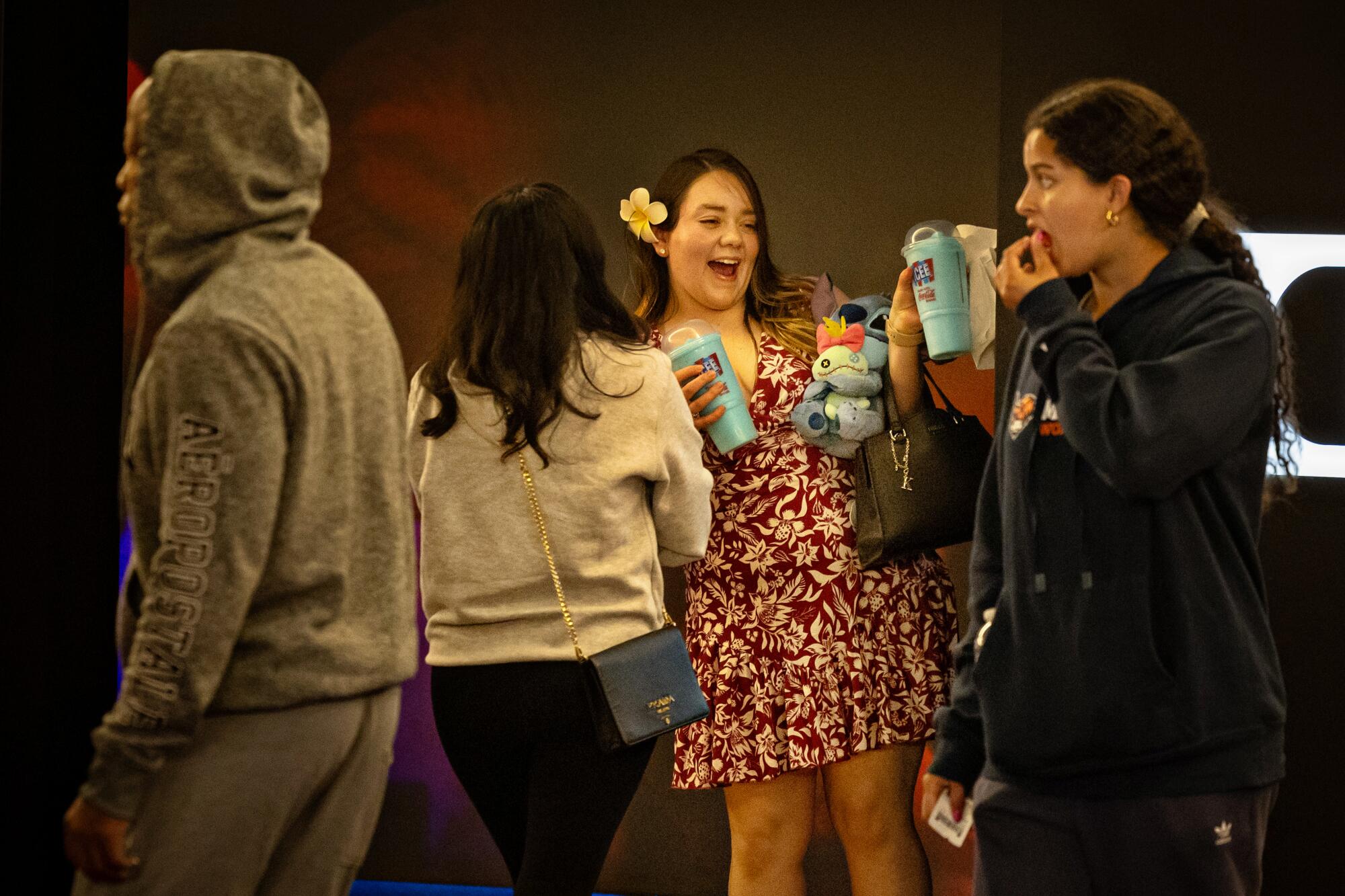
Moviegoers head to showings of “Lilo & Stitch,” one of this Memorial Day weekend’s biggest films at AMC Century City.
Even before the pandemic, theaters were starting to see declines in attendance, a trend that accelerated during COVID-19 when people got used to staying at home and watching movies on streaming platforms. As the pandemic and the strikes decreased the number of movies in theaters, and the length of time between a movie’s theatrical debut and its availability for home viewing shortened, theaters lost more of the crucial business of the casual moviegoer.
“When the content is good, people show up,” Handler said. “The content cycle is favorable right now, and hopefully we’ll see that continue through the next two years.”
Staff writer Meg James contributed to this report.
-
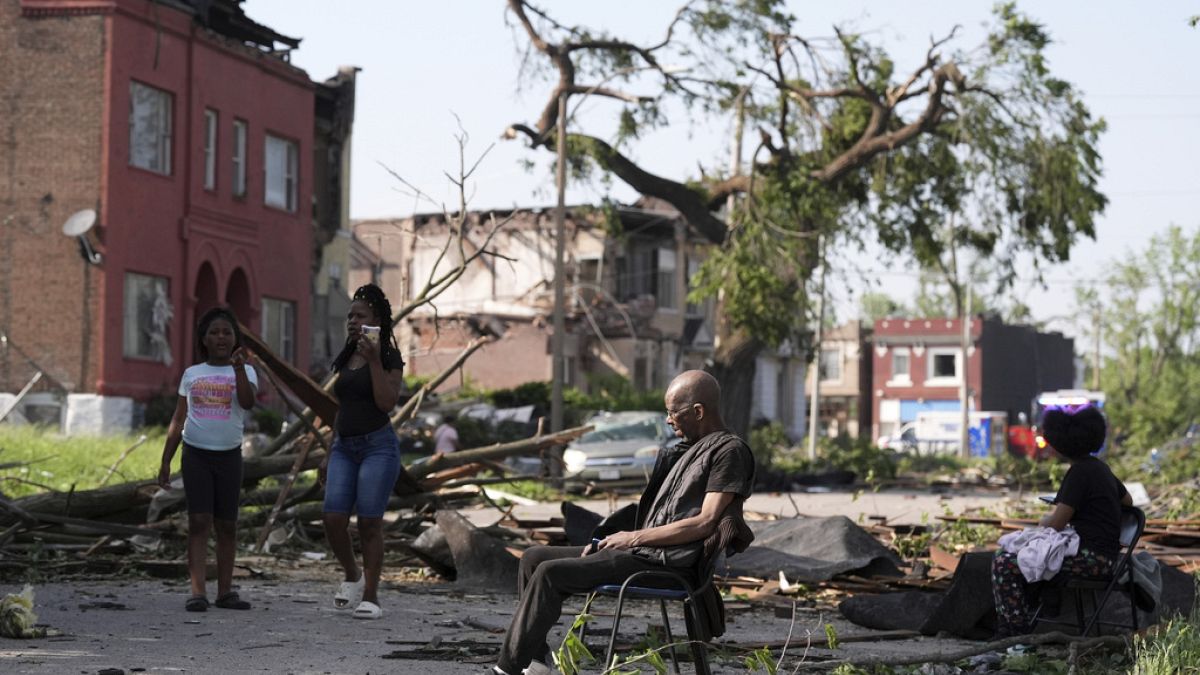
 World1 week ago
World1 week agoSevere storms kill at least 21 across US Midwest and South
-

 News1 week ago
News1 week agoWatch: Chaos as Mexican Navy ship collides with Brooklyn Bridge, sailors seen dangling – Times of India
-

 News1 week ago
News1 week agoMaps: 3.8-Magnitude Earthquake Strikes Southern California
-
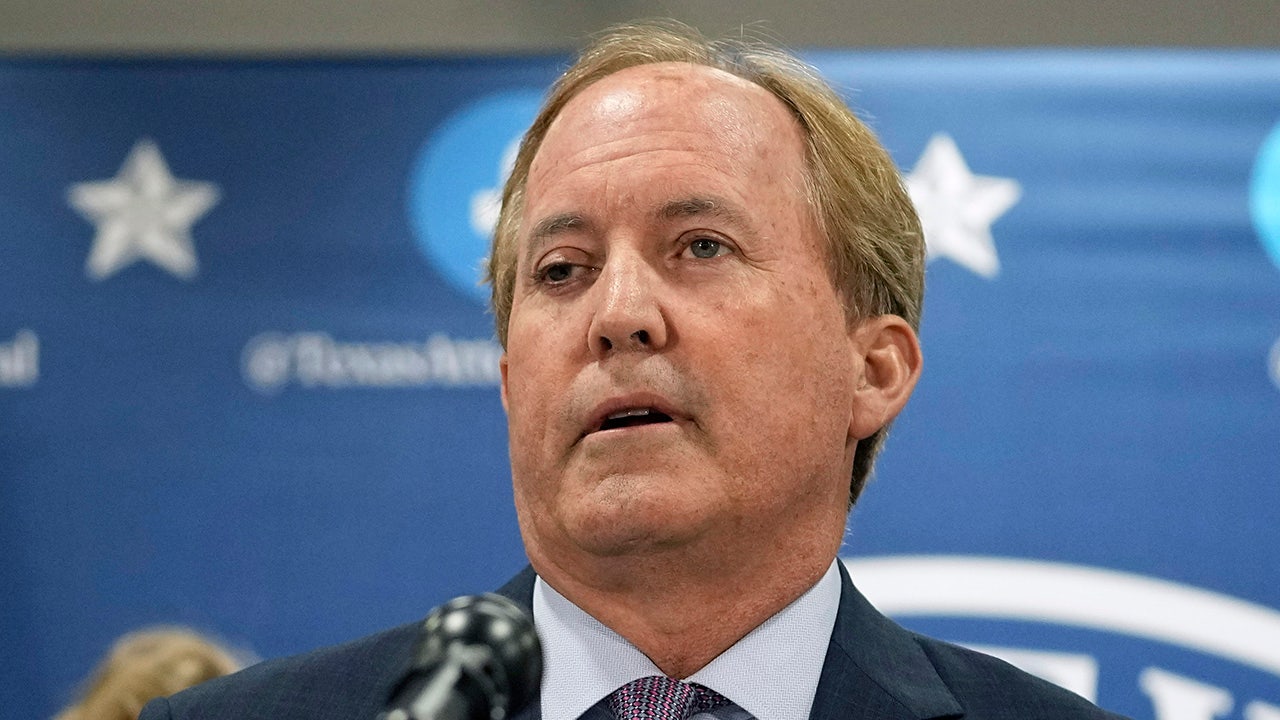
 Politics1 week ago
Politics1 week agoTexas AG Ken Paxton sued over new rule to rein in 'rogue' DAs by allowing him access to their case records
-

 Politics1 week ago
Politics1 week agoAfghan Christian pastor pleads with Trump, warns of Taliban revenge after admin revokes refugee protections
-
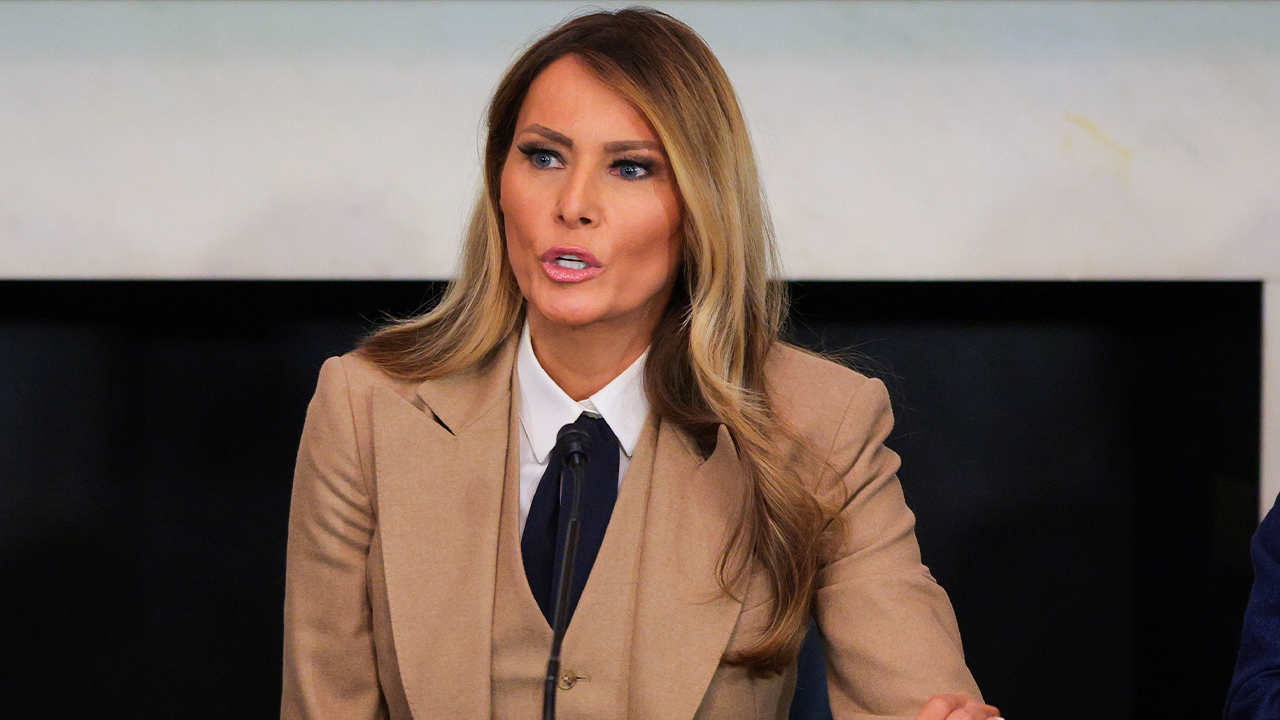
 Politics1 week ago
Politics1 week agoTrump, alongside first lady, to sign bill criminalizing revenge porn and AI deepfakes
-

 World1 week ago
World1 week agoPortuguese PM’s party set to win general election, fall short of majority
-

 News1 week ago
News1 week agoVideo: One Person Dead in Explosion Outside Palm Springs Fertility Clinic


